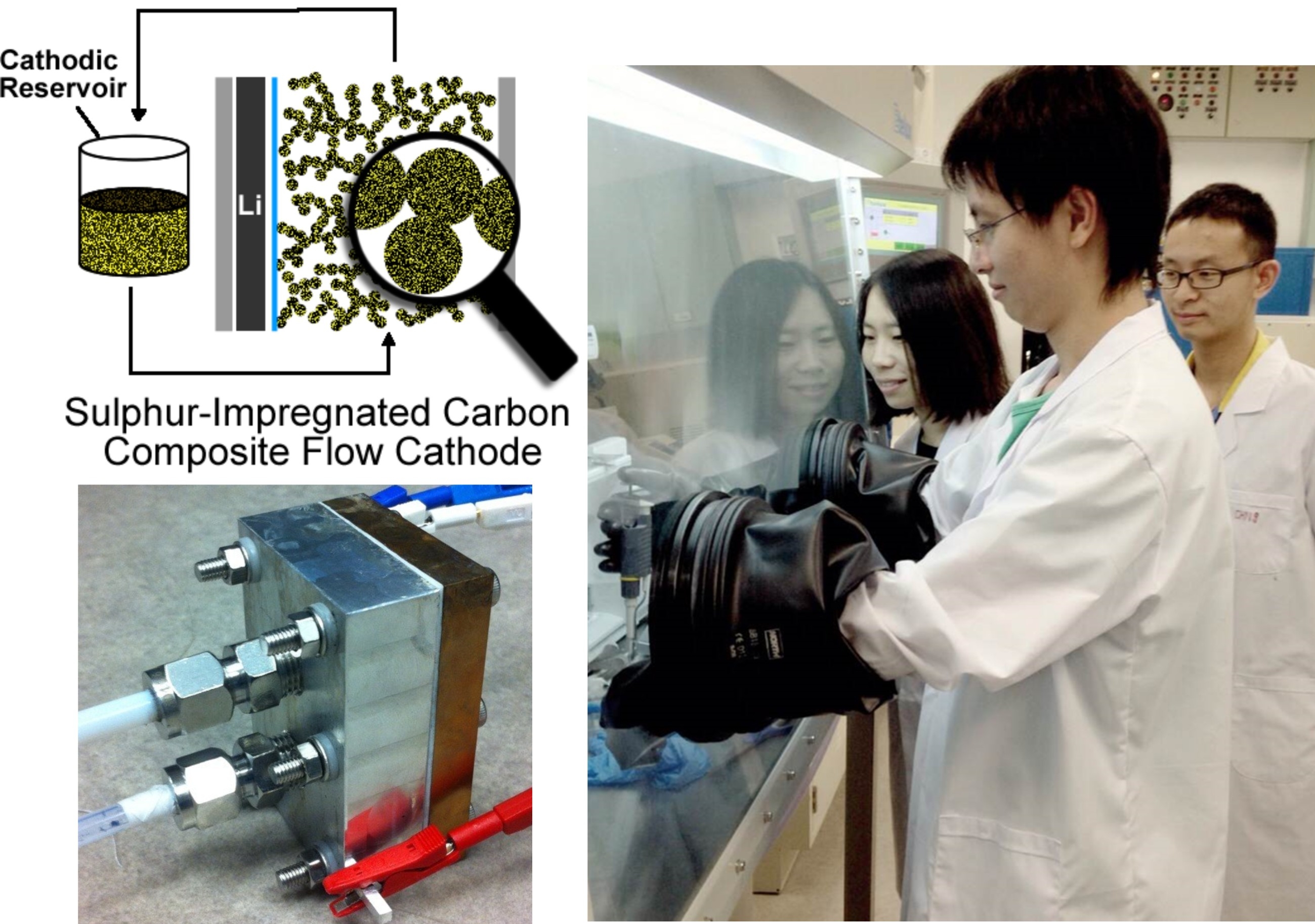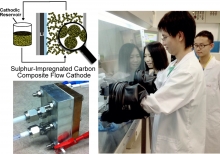CUHK
News Centre
CUHK Engineering Professor Pioneers a Step toward High-energy Redox Flow Batteries
Prof. Yi-Chun Lu, Assistant Professor, Department of Mechanical and Automation Engineering, The Chinese University of Hong Kong (CUHK) and her research team recently reported a flow cathode that exploits highly concentrated sulphur-impregnated carbon composite, to achieve high catholyte volumetric capacity, battery energy density, cycle life (>100 cycles), columbic efficiency (>90%) and energy efficiency (>80%). Their approach achieved the highest catholyte volumetric capacity (294 ampere-hour per liter) reported to date, which is five times that of vanadium catholyte and 3–6 times that of the demonstrated polysulphide flow catholyte. Combining the sulphur flow catholyte with a lithium anode, they achieved energy density as high as 654 watt-hour per liter, which is one of the highest energy densities reported for lithium flow batteries. The findings have recently been published in Nature Communications, the well renowned international journal in the field of biological, physical, chemical and earth sciences.
As demands for energy grows and the effects of global climate change becomes more acute, the need to replace traditional fossil fuel with alternative energy sources that are both clean and renewable also becomes urgent. Energy storage system is a critical enabling factor for deploying unstable and intermittent renewable power sources. Redox flow batteries (RFBs) are promising technologies for large-scale electricity storage, owing to its design flexibility in decoupling power and energy capacity. However, the RFBs have been suffering from low energy density, which significantly decreases its competitiveness for both stationary and transportation applications.
Prof. Lu’s research team approach creates effective interfaces between the insulating sulphur and conductive carbon network and offers a promising direction to develop high-energy-density flow batteries.
‘Through this research, we promote high-energy-density redox flow batteries and strive to achieve efficient storage technology for renewable energy sources.’ said Prof. Lu.
Reference: Chen HN, Zou QL, Liang ZJ, Liu H, Li Q & Lu YC (2015) Sulphur-impregnated flow cathode to enable high-energy-density lithium flow batteries. Nature Communications 6(5877). DOI: 10.1038/ncomms6877
http://www.nature.com/ncomms/2015/150107/ncomms6877/full/ncomms6877.html
Prof. Yi-Chun Lu and her research team are assembling lithium sulphur-impregnated carbon composite flow battery in a glovebox. A schematic illustration of the lithium sulphur-impregnated carbon composite flow battery (top left). A photograph of the flow battery prototype developed in this work (bottom left).





